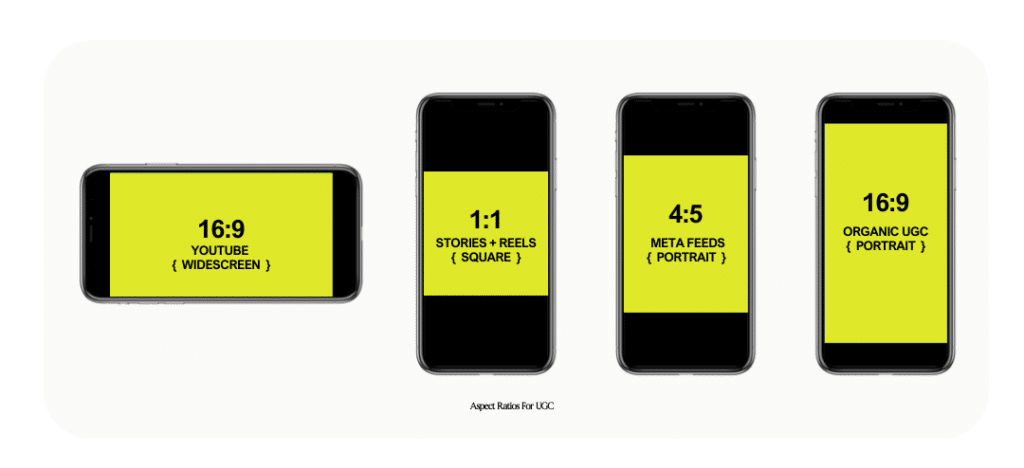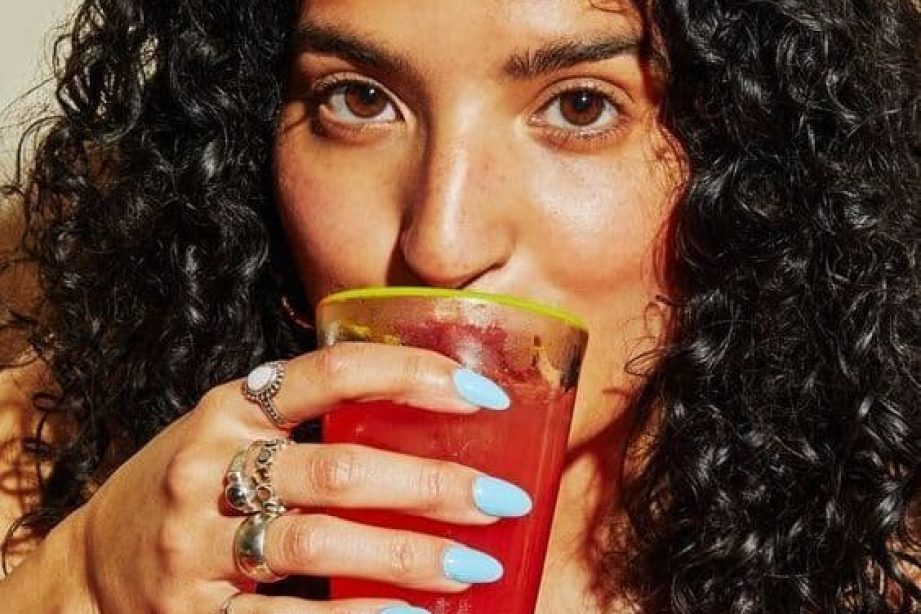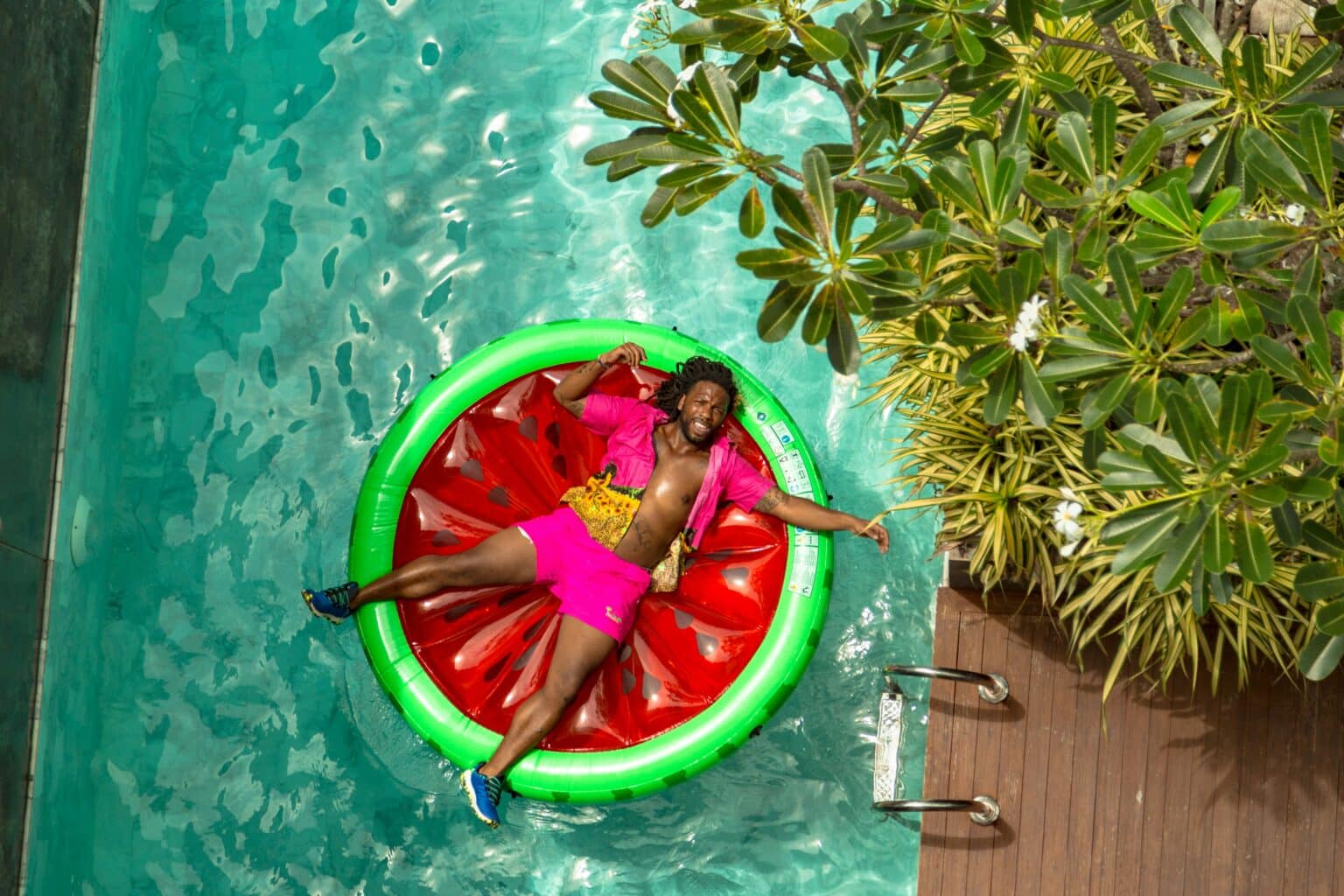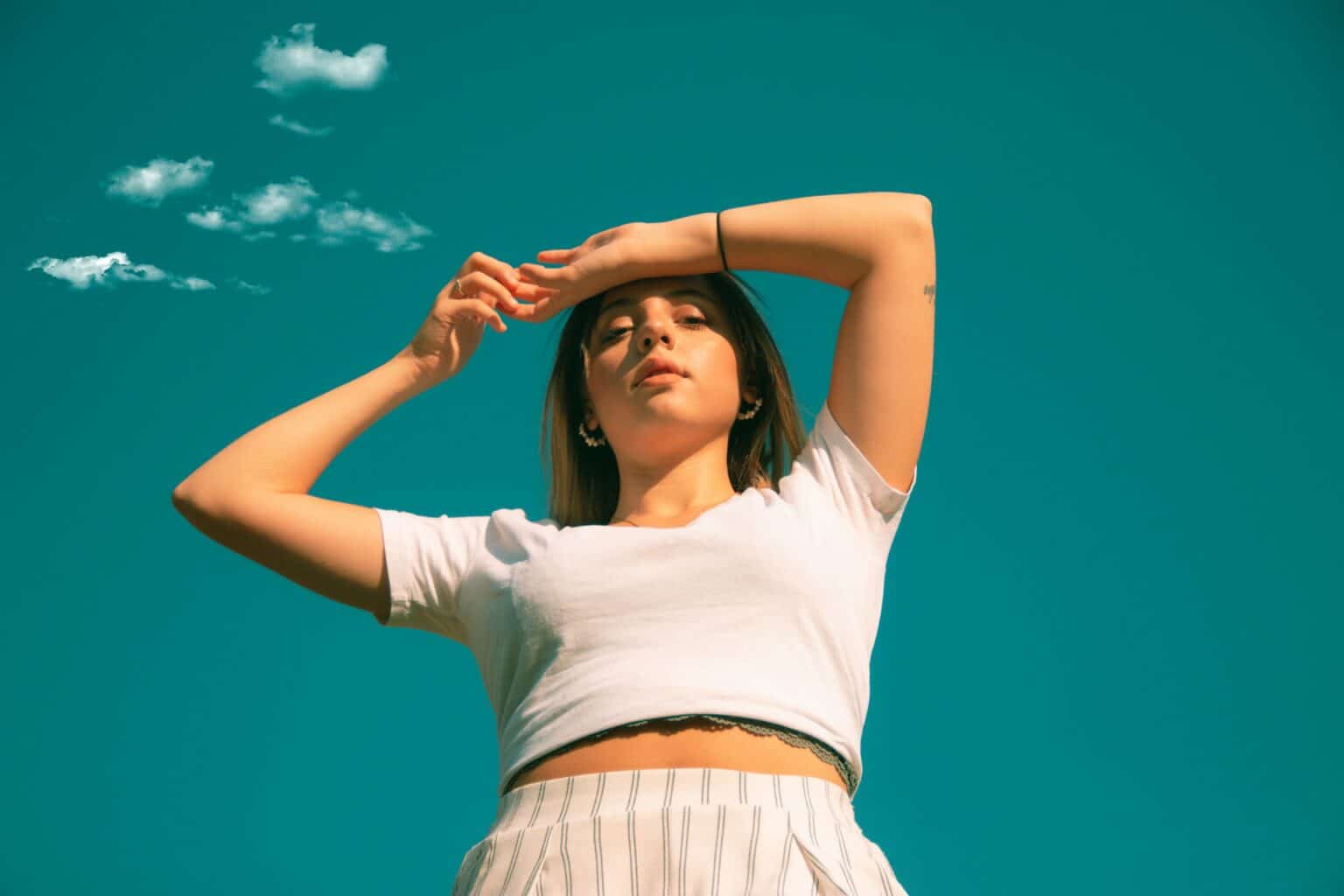Aspect ratios might just be make or break when delivering UGC content to a client.
These ratios should be a critical consideration for UGC creators, as different social media platforms have specific aspect ratio requirements for optimal display and engagement.
For instance, Instagram stories, Snapchat, and TikTok have a 9:16 aspect ratio, while Instagram and Facebook feeds favor a 4:5 aspect ratio. YouTube, on the other hand, requires a 16:9 aspect ratio. Get it wrong, and your hard-placed captions and well-thought-out product placement quite literally go to sh*t.
By understanding the aspect ratio requirements of each platform, UGC creators can not only ensure that a client’s content is optimized for maximum impact and engagement, but you can open up an avenue for extra $$$. Let’s chat.
What Is An Aspect Ratio?
An aspect ratio is just a fancy way of displaying the proportional relationship between the width and height of an image, video, or screen.
It is expressed as two numbers separated by a colon, such as 16:9, 4:3, or 1:1. It’s not a size/dimension. Stick with me here, it’s easier than it sounds.
An aspect ratio of 16:9 means that the width is 16 units and the height is 9 units. This is a standard widescreen aspect ratio used in most modern TVs, computer monitors, and digital content.
An aspect ratio of 1:1 means that the width and height are equal, creating a square aspect ratio.
But why is this so important?
Why Is Aspect Ratio Important For UGC?
The aspect ratio is crucial when filming ads for social media because different platforms and devices have specific display requirements. If you’ve not clarified with the client, you will most likely be filming your content in 9:16 — the standard ratio on an iPhone camera.
If the client is then looking for a 1:1 variation to use on Meta, you may be left holding the product just out of shot or in a way that cuts off half of your forehead.
Knowledge is power, and understanding where the brand will be running ads before you start filming is vital.
〰️ Optimal Viewing Experience: Social media platforms have diverse audiences using various devices. By adhering to the correct aspect ratio, your ad will be displayed properly on all devices, ensuring a seamless and engaging viewing experience for users.
〰️ Avoiding Cropping and Distortion: Using the wrong aspect ratio may lead to cropping or stretching of your ad content. Cropped or distorted ads can appear unprofessional and may fail to convey your message effectively.
〰️ Attention-Grabbing: By using the right aspect ratio, you can make sure your ad takes up the maximum real estate on the screen, increasing the chances of users stopping to watch it.
〰️ Expert Positioning: Posing the question of aspect ratios shows a deeper understanding of paid media and instills confidence in the client. This indicates you know what you’re talking about.
〰️ Efficiency: Creating ads in multiple aspect ratios from the beginning can save time and resources later on — I don’t think there is anything that will make you a better creator for a client than submitting your video in three different aspect ratios without them having to ask. It’s no extra work for you, but it allows them to repurpose content for various platforms without the need for extensive editing or reshooting. Repeat client? Yes, please.
So we know that understanding the correct aspect ratio when filming and editing is a big yes, but what do you actually need to know?
What Aspects Do I Need To Know?
As a creator, understanding the critical aspect ratios you must master for organic UGC, meta ads, Reels, Stories, and YouTube ads is a non-negotiable. From vertical 9:16 for mobile optimization to cinematic 16:9 for widescreen experiences, here are the ratios you need to know.

Organic UGC: 9:16
The 9:16 aspect ratio is a vertical orientation, where the height is 9 units and the width is 16 units.
It is commonly used for portrait-style content, optimized for viewing on mobile devices, and is a standard aspect ratio for vertical videos on social media platforms like Instagram Stories and TikTok. If we’re filming organic UGC, this is the one.
This aspect ratio is ideal for capturing the viewer’s attention quickly on mobile screens and ensuring the content fits within the portrait format of smartphones.
Meta Ads: 4:5
Typically sized at 1080x1350px, the 4:5 aspect ratio is ideal for Instagram and Facebook feed posts, as it takes up more screen space and allows for a more immersive experience.
When you think about scrolling on Facebook or Instagram, the 4:4 is taller than a square post. It takes up more real estate and gives you more chances to hook the viewer visually.
Reels And Stories: 1:1
Sized at 1080x1080px (typically), the 1:1 aspect ratio is better suited for Instagram Reels and Stories, as it is easier to view on mobile devices and requires less scrolling.
This used to be the be-all and end-all of paid ads but has since fallen off, thanks to platform shifts. It’s still lovely to deliver for clients, giving them options.
YouTube Ads: 16:9
16:9 is a horizontal orientation, think YouTube ad style. It is widely used for widescreen content, including videos, television shows, and online streaming platforms. The 16:9 aspect ratio is the standard for most modern TVs, computer monitors, and digital content on social media platforms like YouTube and Facebook. It provides a wide and cinematic viewing experience and is suitable for various video formats, making it a versatile choice for a wide range of content types.
Only do 16:9 if it is discussed with the client. This will require specific production pivots and likely require more time. Obviously, if you are shooting vertically, you can resize between 1:1, 9:16, and 4:5 pretty easily, but this isn’t the case when switching to landscape. It will most likely be a reshoot, so don’t even open this can of worms unless discussed.
Should I Offer Multiple Ratios For Free?
This is down to each individual creator. For me, personally, adjusting the aspect ratio in Premiere Pro takes me 5 minutes more, tops. When I deliver my content to a brand, I get to do so in a way that makes me look like an expert in my field. Without them asking, I’ve given them exactly what they need to run cross-platform campaigns.
I deliver delight, and I don’t about you, but if it were me I’d be more likely to return to that creator than one that asked for another $50 to resize a video the brands already paid for.
Ultimately, understanding the aspect ratio allows you to deliver better content that has more chances of converting. By experimenting with different aspect ratios and analyzing engagement metrics, brands can determine which aspect ratio works best for their content and target audience. Once they work that out, they’ll be back for more.










